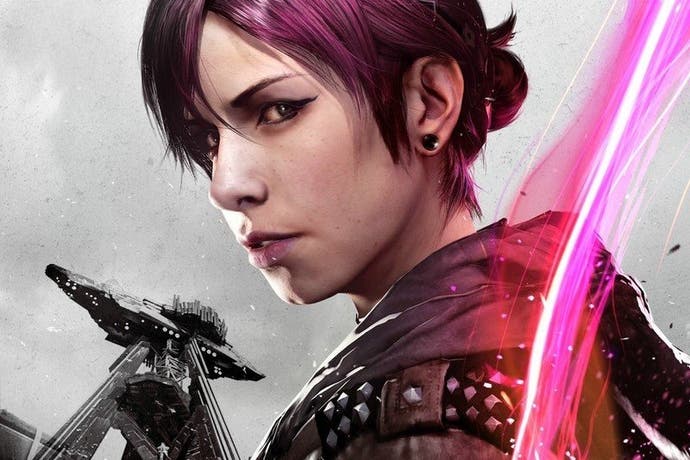Performance Analysis: inFamous First Light
Second shot.
When inFamous Second Son was released earlier this year, the game's developer, Sucker Punch, delivered a strong technical showing that clearly demonstrated the advantages of the latest Sony console. Unfortunately performance wasn't quite where we would have liked with an unlocked frame-rate coupled with inconsistent performance and occasional dips below 30fps. With inFamous First Light, the standalone downloadable episode, Sucker Punch has been given another shot to further refine its already impressive tech. The question, then, is to what extent the developer has decided to tackle performance - if at all.
With Second Son, our testing suggested an average frame-rate somewhere around 35fps during a normal run of play, producing noticeable judder on a 60Hz. We weren't so happy with the decision to go with an unlocked frame-rate at the time but thankfully, as with Guerrilla Games and Killzone Shadow Fall before it, Sucker Punch implemented an optional 30fps cap, giving gamers the chance to choose between raw unlocked performance and a more consistent update. Keeping this in mind, let's take a look at the latest episode.
First Light takes place predominately across the first of the two islands available in Second Son while also offering a slew of indoor areas within the DUP containment facility. Prior to testing, we had hoped that, by utilising more confined environments, we might actually see frame-rates improve, perhaps even closing in on that 60fps mark. That turned out to not be the case at all, however, with the average frame-rate during these sections remaining mostly under 40fps. While the visuals in these sections remain quite detailed and impressive in their own right, it does suggest that their engine is not entirely bottlenecked by handling large environments.
Conversely, we were surprised to find that gameplay set within the city itself actually seemed to operate at a slightly higher average frame-rate. While exploring the city we found that the frame-rate stuck more closely to a 40fps average. There is a palpable sense while moving about that performance is indeed faster than the original game. If you take a look at the performance analysis comparing the two releases the difference becomes pretty clear; First Light has a good 5fps advantage, give or take, over Second Son for much of the duration. As with the first release, the frame-rate reaches its lowest points during combat sections, once again suggesting that the game's bottlenecks may have more to do with enemy encounters than anything else. Changes made to the city include the removal of DUP outposts, which aren't installed yet in this timeline, but it's hard to imagine those changes alone accounting for the difference.
Additional analysis:
While there are improvements, there's not quite enough of a boost to make the unlocked frame-rate work for us. There are still similar consistency issues to Second Son - unique frames persist for different time-periods, causing on-screen stutter. If the judder proves to be overly distracting, however, there is an alternative now thanks to the 30fps cap introduced in a Second Son patch, and retained for First Light. A few months ago we touched on the issue of whether or not higher frame-rates could always lead to better gameplay. The idea is that, while each game should be assessed on its own merits, should the average frame-rate fall too far below 60fps, it's better to limit the frame-rate to a more consistent 30fps instead. The idea is simply to increase consistency by limiting peak performance levels.
Unfortunately, it didn't work quite as well as we might have hoped as there were still plenty of minor drops during gameplay that interrupted its fluidity. This was most clearly seen while traversing the city at high speeds but could occur at any point really. Typically this was nothing more than a single frame persisting one extra frame too long creating a slight visible pause in the action, and only really becomes bothersome when a number of these instances all occur within a short period of time.
Furthermore, massive particle displays and certain combat scenarios could actually drop performance levels below 30fps for a longer duration resulting in obvious slowdown. What was odd, however, was the fact that some of these dips appeared more often when using the 30fps lock, which kind of eliminates the advantage of using it. This is in contrast to Guerrilla Games' work with Killzone Shadow Fall, where its 30fps option is a totally consistent, completely reliable lock.
| First Light | Second Son | |
|---|---|---|
| Lowest Frame-Rate | 33fps | 28fps |
| Highest Frame-Rate | 49fps | 45fps |
| Average Frame-Rate | 40.36fps | 35.92fps |
UPDATE 1/9/14 9:44am: We don't usually post minimum/maximum/average frame-rates because most games operate with a 30fps lock that skews the results. However, with frame-rates unlocked in inFamous, it occurred to us that the statistics could be quite enlightening so we added an illuminating table.
First Light offers the 30fps lock feature as well, and it works in very much the same fashion as Second Son. The frame-rate is capped at 30fps but occasional dips are noted. We put it to the test by running as quickly as possible through the environment and examining the results. The dips persist but do seem to appear less frequently resulting in a slightly more stable experience. It's not a flawless 30fps presentation but it's close enough that it makes using the option worthwhile - the action in First Light actually feels more fluid than the main game.
Naturally the preferred option is going to vary from user to user, but the 30fps cap works better for us. The increased performance level when unlocked is certainly fascinating and does lead to a slightly faster overall experience, but judder remains persistent and severe throughout. The odd skips visible when using the 30fps option are far less frequent and the results feel more consistent overall. The motion blur used in this game is of incredibly high quality as well, serving to increase fluidity when capped at the more consistent 30fps. Still, if you're looking for the fastest overall response then running uncapped in this release still provides a decent experience.
Ultimately, inFamous First Light is a nice little package that squeezes a bit more out of the formula with a lower price tag. There are hints of improved performance over the first release with some tangible benefits to gameplay, and we wonder whether it's the result of optimisation or simply down to the smaller scale of this DLC. Either way, the technology powering the two inFamous PS4 releases remains some of the most impressive we've seen yet from the new wave of console hardware. The lighting, effects, textures, and modelling are all remarkable. It's impressive that the developer was able to deliver such an impressive showing this early in the system's lifecycle. If Sucker Punch can marry this stunning tech with fresh new gameplay ideas for the inevitable sequel, we'd be in for something really special.













